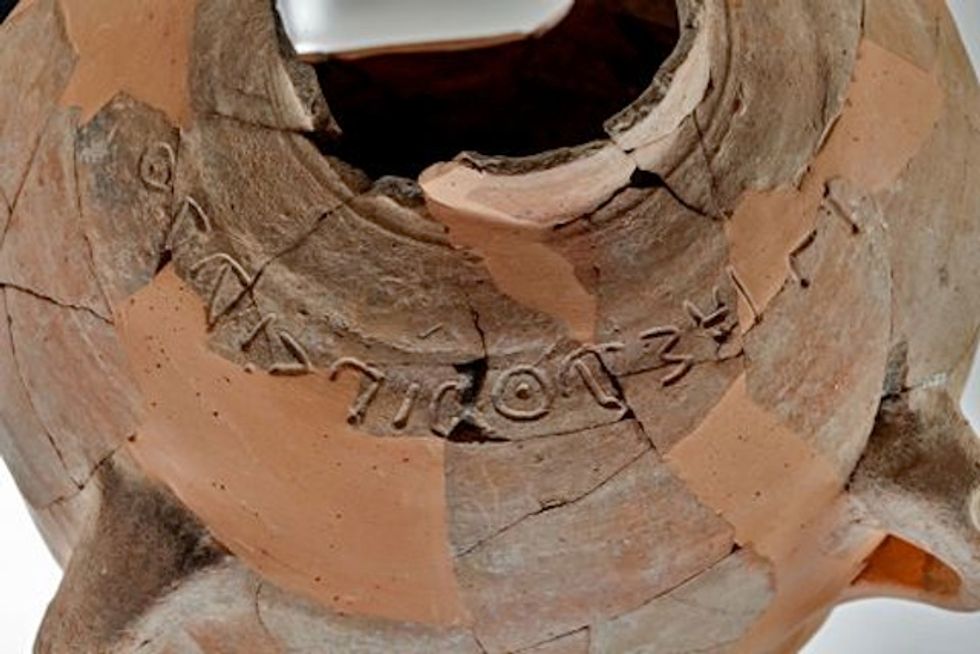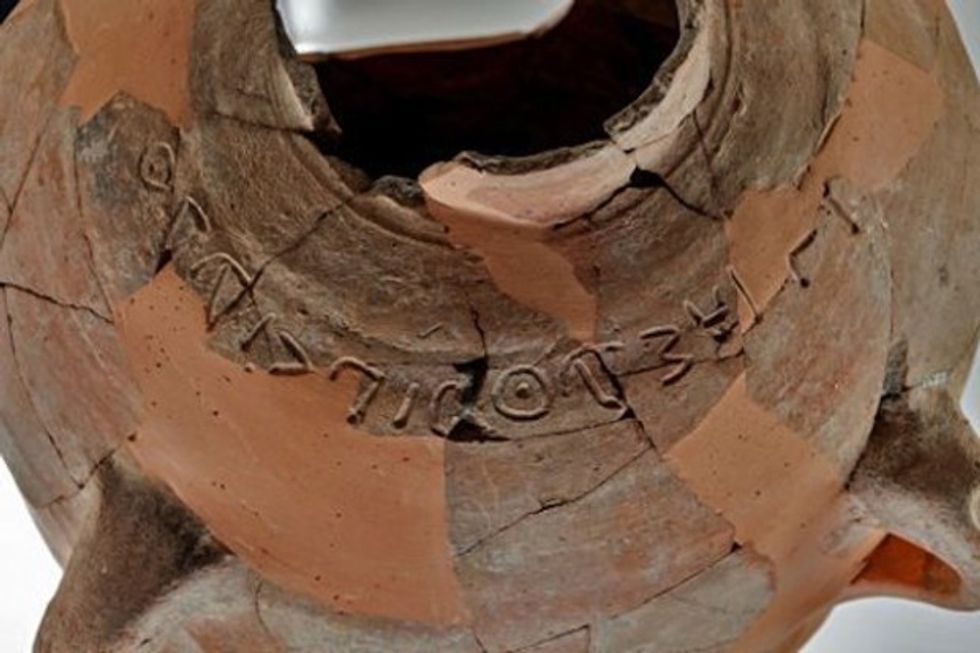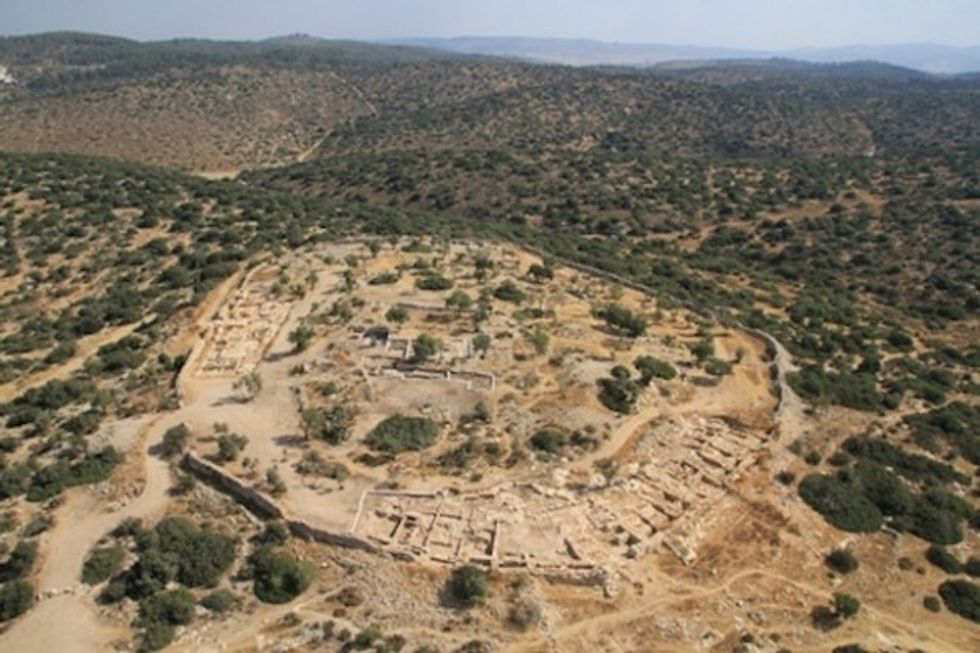
Once they glued together hundreds of ceramic pieces, researchers were able to decipher the ancient message. (Photo courtesy: Israel Antiquities Authority/Tal Rogovsky)

Israeli archaeologists recently unearthed hundreds of ceramic fragments in the Valley of Elah, best known as the site David fought Goliath as described in the biblical book of 1 Samuel.
Once they painstakingly pieced together the fragments, they discovered that they had found a 3,000-year old jar bearing an inscription from the time of King David.

The Israel Antiquities Authority announced Tuesday that after three years of work, researchers have deciphered the ancient text.
During the 2012 excavation that was led by Yosef Garfinkel from Hebrew University's Institute of Archaeology and Saar Ganor of the Israel Antiquities Authority, the archaeologists saw individual letters of ancient Canaanite script inscribed on some of the potsherds.
However, they didn’t know what the actual message was on the jar.
Once reassembled, experts in the ancient language were able to decipher the message which was the name: Eshba'al Ben Bada'.
Even though the revelation of just a name might seem disappointing, archaeologists were able to extrapolate some interesting historical meaning from that inscription.

The Israeli researchers pointed out this was the first time an inscription of "Eshba’al" – which appears in the Bible - was found in an archaeological excavation in Israel.
The discovery emphasized once again the link between scripture and artifacts found in the Holy Land.
Eshba'al, also known as Ish-bosheth, was the surviving son of King Saul who led the Kingdom of Israel after his father and three brothers died in the Battle of Gilboa described in 1 Samuel.
The researchers don’t believe the pot was inscribed in honor of the biblical king, because his name would likely have appeared as “Eshbaʽal Ben Shaul,” that is Eshba’al son of Saul rather than Eshba’al Ben Bada’. At the same time, they noted that the name Eshba’al went out of style by the end of King David’s rule, further helping to date the discovery to the 10th century B.C.
Yosef Garfinkel, the Hebrew University archaeologist, and Saar Ganor of the Antiquities Authority described the biblical connection in a statement:
Eshbaʽal was murdered by assassins and decapitated and his head was brought to David in Hebron (2 Samuel, Chaps. 3-4). It is interesting to note that the name Eshbaʽal appears in the Bible, and now also in the archaeological record, only during the reign of King David, in the first half of the tenth century BCE. This name was not used later in the First Temple period. The correlation between the biblical tradition and the archaeological finds indicates this was a common name only during that period. The name Beda’ is unique and does not occur in ancient inscriptions or in the biblical tradition.
As for the man in the inscription, researchers believe Eshba’al Ben Bada’ was likely the owner of a large agricultural estate where produce was packed in jars inscribed with his name.
The archaeologists explained that the name change from Eshba’al to Ish-bosheth was probably connected to the negative connotations associated with the Ba’al deities worshipped by the Canaanites.
"In 2 Samuel there was apparently reluctance to use the name Eshbaʽal, which was reminiscent of the Canaanite storm god Baʽal, and the original name was therefore changed to Ish-Bashat [or Ish-bosheth], but the original name of Eshbaʽal was preserved in the Book of Chronicles. Thus, for example, the name of the warlord Gideon Ben Joash was also changed from Jerrubaal to Jerubesheth,” said Garfinkel and Ganor.
The dig was at the excavation site of Khirbet Qeiyafais, believed to be the location of the biblical city Sha'arayim.
Among the other items found in the ancient fortified city were two gates, a palace, storerooms, dwellings and cultic rooms. The Israel Antiquities Authority said the city dates to the time of King David, the late 11th and early 10th centuries B.C.
The earliest Hebrew inscription found to date was also discovered at the site in 2008.
The archaeologists said that the latest inscription deciphered along with four previous inscriptions found suggests “writing was far more widespread than previously thought” during that time.
“It seems that the organization of the kingdom required a cadre of clerks and writers and their activity is also manifested in the appearance of inscriptions,” Garfinkel and Ganor said.